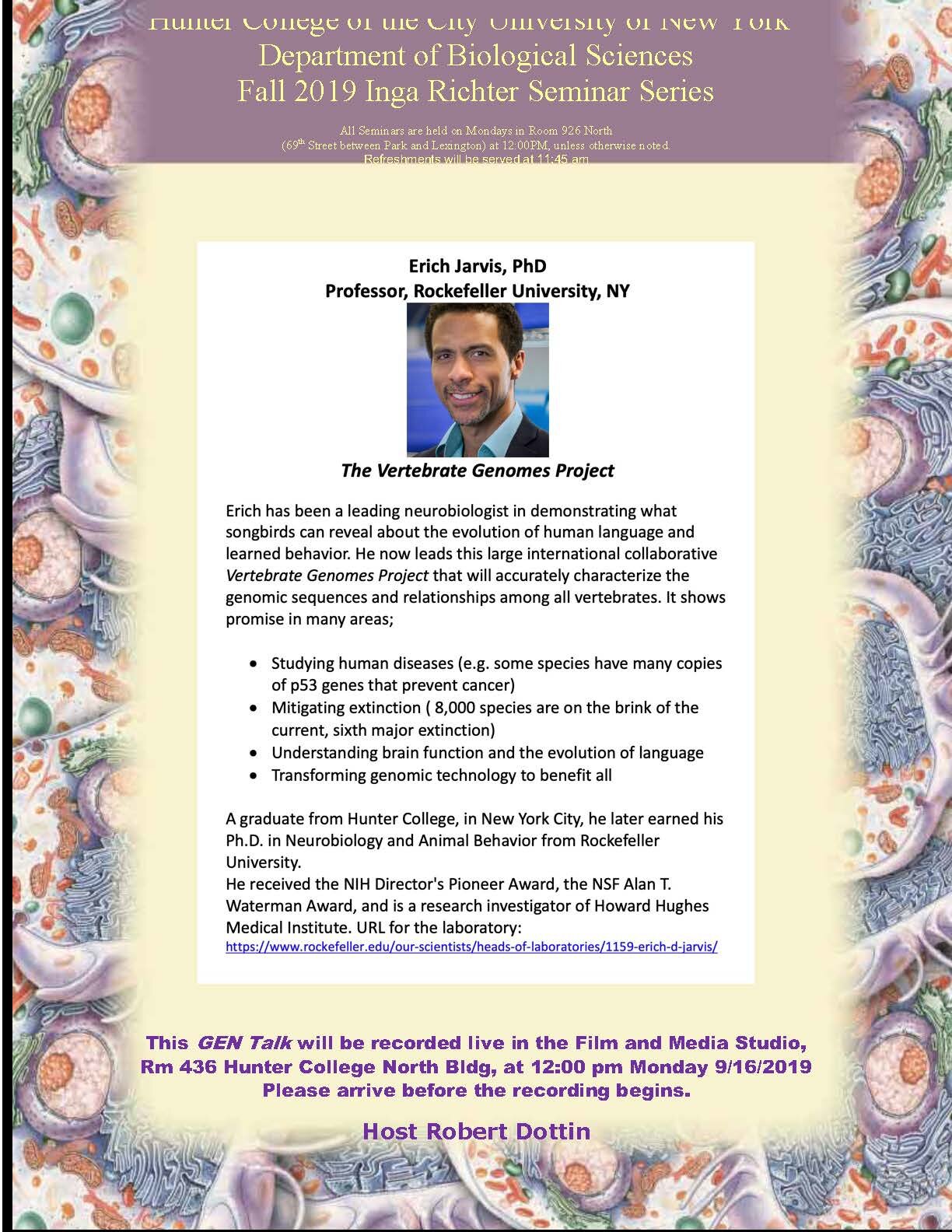Carolina joined the lab in May and just defended her First Exam, great work!
Here Carolina trains Rebecca how to dominate at foosball.
Carolina joined the lab in May and just defended her First Exam, great work!
Here Carolina trains Rebecca how to dominate at foosball.

Data-driven multiscale modeling of cortical circuits, Salvatore Dura-Bernal (SUNY Downstate Medical Center)
The Graduate Center (34th St. & 5th Ave), Room 6304.01, 10-11:30am

Salvatore Dura-Bernal’s research focuses on understanding cortical circuits through large-scale biophysically-detailed simulations on supercomputers. He has developed the most detailed model of mouse primary motor cortex (M1) circuits by integrating experimental data available at multiple scales -- molecules, neurons, networks and systems. The model provides insights into cortical dynamics, physiological oscillations, information flow and molecular neuromodulatory mechanisms, which has helped develop new hypotheses and guide experimentation. He also developed a software tool (www.netpyne.org) for multiscale modeling of brain circuits. It has already been used worldwide in over 20 labs, to train students and to investigate different brain regions and phenomena. The tool can help to better understand neural brain function and disorders, and aid in developing novel pharmacological or neurostimulation treatments.
Moses Chao (NYU School of Medicine)
The Importance of Activity in the Nervous System
Friday, Sept. 20, 10-11:30, Rm. 6496

The Vertebrate Genomes Project, Eric Jarvis (Rockefeller University)
Room 436, Hunter North

Matthew Gardner (NIDA)
The Orbitofrontal Cortex and Economic Choice
Graduate Center, CUNY, Rm. 6496
Our review, Toward an animal model of borderline personality disorder, is now out in the Computational and Translational issue of Psychopharmacology. In it, we collaborated with Dr. Koenigsberg, a clinician studying mood disorders at Mt. Sinai, to come up with a clinically relevant animal model for studying molecular and circuit-level changes in Borderline Personality Disorder, in order to move forward with better targeted therapies.
Special thanks to Morgan Corniquel for her drive to bridge the two sides of her MA thesis to collaborate on this topic!
Itamar defended his 2nd doc and led a spirited discussion on how stress affects the basal forebrain. I’m looking forward to seeing how this story develops!
Raviv Pryluk (Weizmann Institute of Science), Room 926HN, 1-2pm
A Tradeoff in the Neural Code Across Regions and Species
In the first part of the talk I'll discuss how there exists a tradeoff in the neural code where human neurons utilize information capacity (efficiency) better than macaque neurons, and cingulate cortex neurons are more efficient than amygdala neurons in both species. On the other hand, amygdala human and monkey neurons show more synchrony and vocabulary overlap (robustness). In the second part of the talk I'll present our new data showing that there exists a shared neural code for eye-gaze and valence information in the primate amygdala.
Meghan Lockard (Rockefeller University): “La Dolce Verma: Oxytocin, Dopamine, and their Role as Comodulators in Nematode Nooky”, 1:15 -2:15 pm, Rm. 926HN
Oxytocin has been known to the biomedical community for 150 years as being a regulator of complex reproductive behavior and physiological processes in mammals and other vertebrates, but evolutionary the neuropeptide emerged in metazoans about 700 million years ago, around the same time as bilateral symmetry. In every instance where it has been studied, from nematodes to humans, oxytocin homologs have been shown to play a role in mate search, mating, and/or provisioning of offspring. What is the basis for this genetic and functional conservation? To address this, I looked at the functional role of oxytocin in modulating the mating circuit of the nematode C. elegans. Like its mammalian homolog, nematocin comodulates mating behavior with the nonclassical neurotrasmitter dopamine. Through genetics, neuronal imaging, and circuit manipulation, I show how the timing and levels of nematocin release are critical for the male to mate with coherence and momentum. Dopamine couples this release with specific stimuli from mating via the antagonism between a D1-like and a D2-like receptor expressed in the same nematocin releasing neuron, DVA. The circuit serves as a model for how a simple, highly conserved repertoire of neuromodulators could generate some of nature's richest and most complex behaviors.
Looking forward to our own Mitch Goldfarb (Hunter College) share his recent work at the Biology Seminar, 12pm, Rm. 926HN
“FHF Modulation of Sodium Channel Inactivation Gating in Cardiac and Nerve Conduction: Empirical and Computational Findings”.

Jeffrey Martens (University of Florida)
Olfactory cilia: linking sensory cilia function and human disease
12-1pm, Room 926 Hunter North
11 - 12:30pm Rebecca will be presenting our anatomy work on prefrontal connectivity with the basal forebrain at Poster #15. Come and take a look at what she’s been working on with Nick!
2-3pm Erich Jarvis (Rockefeller): Insights from Non-Human Animals into the Neurobiology of Language.

Bruce McEwen (Rockefeller), “The Brain on Stress: Epigenetic Influences on Brain and Body Health”.
12-1:30pm, Psychology Seminar Series, Room 612HN
This week at the Grad Center Neuroscience seminar Christopher Baldassano will discuss segmentation of episodic memory.

This Friday, Kelly Webster (laboratory of Tony Ro, The Graduate Center, CUNY) & Jon Perelmuter (laboratory of Paul Forlano, Brooklyn College, CUNY) will present their thesis work.

Tomorrow at the GC, Room 6496 at 10am

Happy to welcome Joshua Gordon, the Director of the NIMH, at The Graduate Center Neuroscience Colloquium this coming Friday.

“From Workbench to the Writing Desk”, Dr. Andrea Rothman, author of The DNA of You and Me, will discuss her journey as a woman scientist that lead to the publication of her first novel.
Room 926, Hunter North